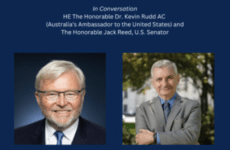By: Sarah Iani
Posted In: Entertainment

Photo credit: KRT Entertainment
She likes to think of herself as one of the first.
“As usual, I am a trend setter,” says Ashby Connors, sophomore at the University of Maine-Farmington. Connors, who used the server Livejournal.com to start her online journal almost four years ago, rants, raves, and holds discussions on any topic that occupies her mind, all for anyone to read. But the public exposure doesn’t faze her one bit. “I had a sneaking suspicion I was crazy,” the 19-year-old says. “And I figured the public could either confirm or deny it.” Connors is one of many that are taking part in the new wave in technology: online journals. In contrast to traditional web logging that lists an author’s favorite sites and is focused outside the author, online journals look inward at the author’s life through a culmination of thoughts, experiences and opinions. According to Technorati, a blog analysis firm that tracks almost five million web logs, a new web log is created every 7.4 seconds, culminating in 12,000 new blogs a day. And the blogosphere continues to grow, doubling every five months over the last year and a half. Technorati reports that the number of blogs is now eight times larger than the last counted 500,000 blogs in June 2003. Psychologists who study the blog explosion disagree over what exactly compels people to put themselves into cyberspace. However, many see a sense of community in an increasingly isolated world, and with the volume and variety of blogs available, are reluctant to predict an end to the blogosphere world. Users such as Connors are motivated by the comments their posts receive on their blog, whether from friends or “random” people that stumble upon their journal. Servers such as Blurty and LiveJournal offer features that allow visitors the ability to search for “random” blogs according to interest or other criteria, and with the click of a button, any reader can write the author a comment. “Responses a lot of the time are friends who tell me they think I’m dumb, or not dumb, or to make comments on whether or not they agree with what I’m saying,” says Connors. “My journal is more like a public portfolio than a diary.” There are many different kinds of journals and blogs, ranging from personal to corporate, on a variety of subjects that are maintained by all ages. According to LiveJournal.com, 18-year-olds show the largest numbers with 253,656 journals on the site as of Dec. 13, followed closely by 250,375 journals by 17-year-olds. Total accounts on the site number 5,426,984. Audrey Gent, 18, started her journal on Blurty about a year and a half ago, after reading her friends’ journals and the positive responses that they got. Today, she continues to write two to three times a week and it has become a way to keep in touch with friends now that she attends Plymouth State University in New Hampshire. “I like writing in it,” says Gent. “I still have things to say.” Although personal blogs are booming, many sites offer communities that allow users to post entries on a common site, often on common topics. The Diary Project is one such site, a collective journal for teens in which to share their experiences, that has been in existence since Sept. 1995. The Project was aimed at youth aged 13 through their early 20s, in order to bring together a community of the young. “I felt like young people needed a place to share their innermost thoughts that was safe,” says Judi Shils, founder of Diary Project. “It allows people to talk about their thoughts, feelings and fears, and to be able to get feedback from their peers.” Yet another common blog type is political or news-oriented. John C. Dvorak, writer for PC Magazine, created his own journal six months ago as an outlet to post interesting discoveries a few times a day and to link websites that he finds amusing. “What stands out is that it’s easy for anyone to do it,” says Dvorak. In the rising world of blogging, convenience and no cost have paved the way for a generation that has grown up on computers. Out of the total accounts on LiveJournal, 98 percent of them are free accounts, compared with about two percent paid accounts. Paid accounts come with a few more features, but the majority of users are content with what they, and anyone with access to a computer, can get for free. Today, about 11 percent of internet users are also regular blog readers, according to the Pew Internet & American Life Project. Bloggers themselves update with some regularity, logging about 275,000 posts daily, with 11,000 updates an hour. The largest demographic is from age 13 to 19, making up about 52 percent of blogs, reported from a study by the Perseus Development Corp. “People are attracted to web logs because mostly it’s an unusual hobby for most people,” says Dvorak, who has studied the phenomenon for the last three years. “But some tend to be fanatical about them as if they are going to change the world. They’re not.” Web logs first came onto the scene as a spin-off of the personal web page, combining the page with links to other sites the author enjoyed. This made linking between sites easier and allowed the author’s personality to come through. In December 1997, Jorn Barger coined the term “weblog.” The shorter version, “blog,” came about in April or May of 1999 by Peter Merholz, after he broke the word into “we blog” on his weblog, turning it into a verb, meaning “to post on a weblog.” Blogging perhaps first spread during 1995 with the creation of the Drudge Report, maintained by Matt Drudge. The Report broke the Clinton-Lewinsky scandal, and gained a cult following soon after that continues to this day. In 1999, the aptly named blogging service Blogger.com emerged, along with LiveJournal, but it wasn’t until early 2002 that blogging gained greater recognition with the masses during the invasion of Iraq, as conservative, right-wing blogs appeared supporting the war. In 2003, blogs started shaping and uncovering news stories as blogging became more main-stream. Journal services today allow a variety of options and features to the amateur blogger. Entries can either be marked as Public, in which anyone using the site can read the entry, Private to the poster only, or Friends Only, in which the entry can only be seen by those marked as friends on the blogger’s account. The biography and interests section allow the blogger to list information about themselves, express their thoughts, and allow people to find them based on that information, thereby creating community. Debate over whether increasing social use of the internet affects the blogger’s normal social life is still undecided as of yet. Early research by Robert Kraut and Sara Kiesler, professors of Human-Computer Interaction at Carnegie Mellon University, defended that high use of the internet for activities such as blogging took time away from positive social interactions, and so had a negative effect on the individual. This was called the crowding-out effect, asserting that the blogger spent less time in face to face interactions with friends and family. Yet a more recent 2004 study by Kraut and Kiesler does not confirm their earlier assumptions. However, many believe it has an adverse, positive effect on the blogger, expanding and augmenting their social circles. “Teenagers spend a lot of time on the phone,” says Chuck Huff, professor of psychology at St. Olaf College in Minnesota. “Does that mean they spend less time with their friends? Probably not. In fact, teenagers who spend a lot of time on the phone are likely as those who also spend a lot of face-to-face time with friends.” Many bloggers keep up their blogs in order to stay in touch with friends, as well as to meet more. Dan Neal and his friends started their LiveJournals two years ago when they all went to college, in order to stay in touch. Over time those journals have become their prime form of communication. “The majority of us talk more through our journals than through Instant Messenger or on the phone,” says Neal. Connors also welcomes unknown people to her LiveJournal, and finds that about a third of her comments are from people that she doesn’t know, which she likes. This anonymity is cited as a psychological attraction to the phenomenon, allowing access to people who share the same values and passions. “Anonymity allows people to participate in dialogues that they might be afraid to in face-to-face discussions,” says Huff. “It brings like minded people together to discuss things of interest.” Posting online also gains the blogger an audience. According to Dvorak, bloggers can suffer from a societal need to share, and blogging their daily lives is one way to fulfill that need. “This is part of the nature of weblogs: a personal expression and understanding of connectedness,” says Torill Elvira Mortensen of Volda College in her essay Weblogs and the Dilemma of Academia. “To post online is to declare that you are part of something larger, even if it’s just in order to whine about dinner.” Others may be wannabe writers who find cyberspace faster and more rewarding than their work not being read at all. “I have a LiveJournal because I write,” says Connors. “I was sick of only getting my own feedback on my writing.” Whatever the case, the day that blogs disappear from the internet seems very far away. As blogs become more sophisticated and interactive, now often with pictures, this phenomenon has been predicted to expand. According to Kraut, over 60 percent of U.S. households have a personal computer, and over half of those have internet access. As the technology drifts down to less affluent people in the U.S. and other countries, blogging will expand. Yet, as blogging becomes more widespread and commonplace, it may not expand by having people who use it already use it more. “It will become more invisible as it becomes more widespread,” says Huff. “For instance, cell phones now have web browsers on them, and some web sites are built just for phones. Would you say these folks are “using the internet” or just using their phone?” Blogging may also change how people view relationships. As more college oriented blog-type sites devoted to meeting people pop up, such as Friendster or Facebook, bloggers may invite the internet further into their personal life. “More people will use the internet as leverage in their interpersonal life,” says Dvorak. “They can read about them, look at their pictures, etc.” But bloggers themselves continue to keep their faith that the phenomenon will continue. Connors saves all of her entries to a disk, so that she can look back over the years and see how she’s changed and how she hasn’t. Gent plans on keeping her journal alive for a while longer as well, depending on whether she finds her life interesting enough to keep writing about. As time goes on, more blogs will pop up about unforeseen events, whether they will be news or personal. “The trend will continue-it’s gone too far to fade,” says Dvorak. “Five million bloggers will not fade overnight.”













